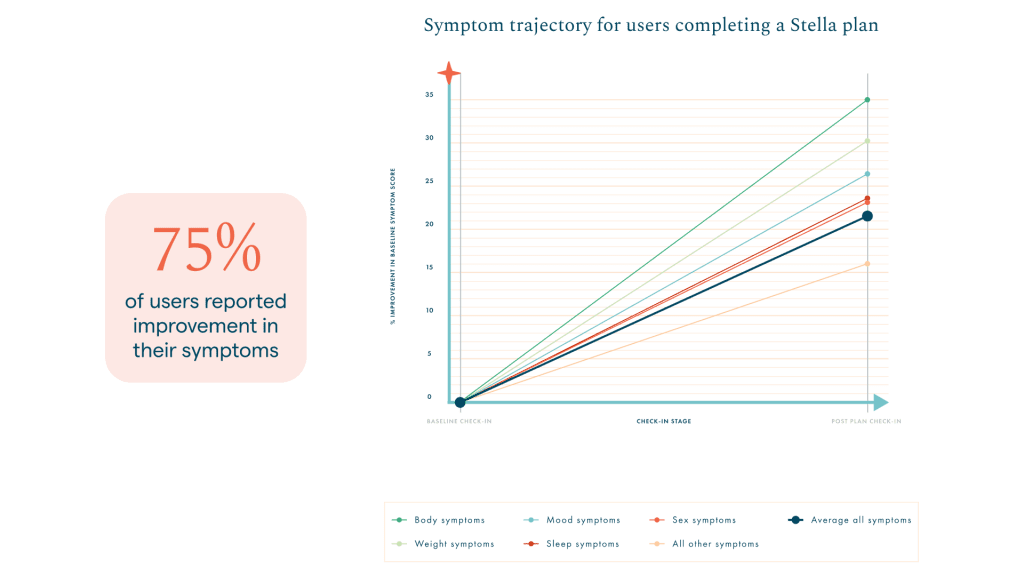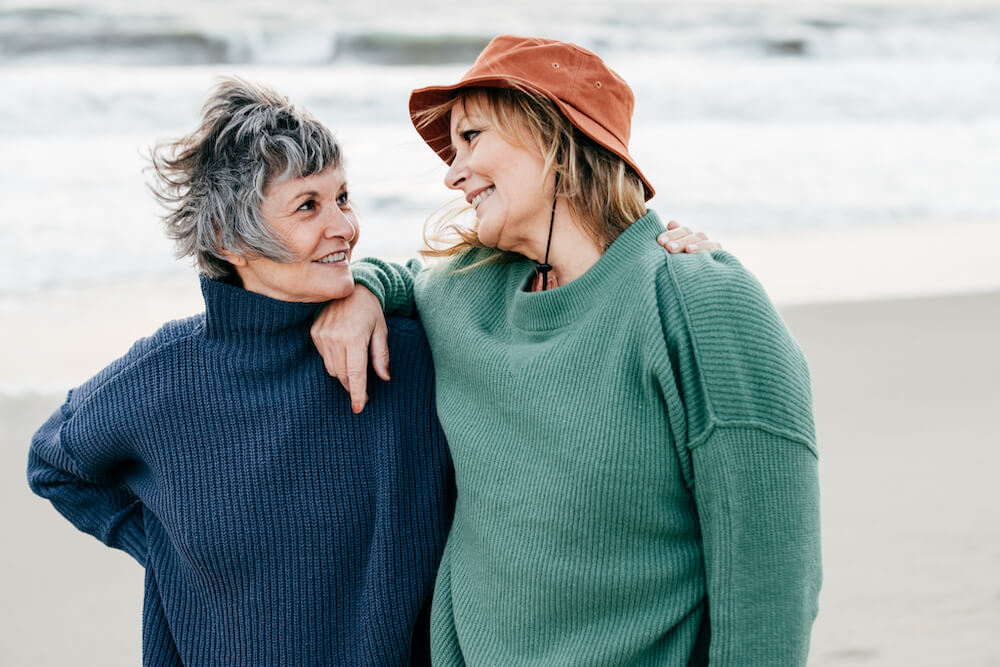The science behind Stella
Evidence base underpinning the content
The process used to develop Stella drew heavily upon the best medical evidence available. This means that the Stella team reviewed clinical research and current guidelines to choose the most effective techniques and treatments for menopause symptoms. These were then incorporated into the app.
Vira Health conducted an initial investigation of 76 Stella app users who completed multiple monthly symptom check-ins. The results indicate a statistically significant improvement between the average baseline and final symptom scores, with the majority of users reporting an improvement in their symptoms. We also observed that users who completed a plan were more likely to report an improvement in their symptoms than those who did not. These preliminary findings are currently being refined and prepared for publication in an academic journal.

How we gather user feedback
Customer feedback is embedded into the core of our product development through user research, which is led by Ria Vaidya, a full-time user researcher within our product team.
Ria holds a BSc in Neuroscience, MSc in Global Mental Health and in International Health Management.
We run continual user testing sessions on every part of our product offering. Participant groups are formed from both current and new customers, ensuring a diversity of backgrounds. A variety of methods are used for gathering participants, including:
- Surveys
- Social media advertisement
- Canvassing customers directly that have opted-in to be contacted
- Using professional user research platforms, such as Askable.com
Studies originate from a number of sources including direct customer feedback channels, analytical product data showing points of decline in use within the experience and new products and features before they are released. Research is then analysed and prioritised within the product development cycle based on positive impact to customers and time needed for development.
One example of a research project is a series of symptom workshops we ran under support of a UKRI Healthy Aging Grant. During May and June 2022, we recruited 75 women from diverse backgrounds (over 40% non-white) in seven co-creation workshops. The research covered the app’s distinct symptom areas, including sleep, mood, hot flushes, night sweats, bladder problems, sex, weight gain and joint pain.
The learnings and feedback from the workshop fed into plan development and a new version launched in August 2022. The research led to the following changes in the app content:
- More multi-media and video content from experts
- Improved habit setting to allow for personalisation
- More stories of menopause experiences
- The ability to change plans when symptoms change
Vira is dedicated to improving accessibility for all, including the 20% of the UK population living with Disabilities. To ensure this, we collaborated with With Not For, an organisation that supports research in this area, to get feedback from women with a variety of Disabilities. The participants found the language in the app easy to understand, jargon-free and non-threatening, including the explanations of medical and technical concepts. The feedback also helped us identify areas for improvement, which is already in the design stages. We remain committed to constantly innovating and updating the app to make it easier to use for people with Disabilities.
How we continue to monitor and develop our content
Website
All of our clinical website content is medically reviewed, currently by Dr Lucy Wilkinson. We endeavor to only publish facts which are backed up by reasonable evidence, and believe in empowering our users to understand the way medical evidence works. We cite all primary sources at the end of each blog in the standard way and often within the main body copy too.
We have authorship bios for every author. Many of our authors come from a professional background and will be participating in continuous professional development, which feeds into the content they produce.
We track rewrites, publish and review dates using our content planner. Dr Wilkinson regularly reviews our content and flags any changes in research/guidance that we need to address in our content.
Our website is GDPR compliant with privacy policy and terms and conditions clearly accessible. We download our images from Adobe and follow copyright rules. We use Government Digital Service, NHS Style Guide, Guardian Style Guide and Plain English Campaign guidelines when writing content to make it accessible.
App
Content within the plans on our app is drafted by subject matter experts, reviewed by different specialists and signed off through a rigorous fact-checking process. Our experts check our content for accuracy and we update our plans if there are any research or scientific developments so information is always up-to-date.
We strive for accessibility in content design. It is important that Stella is inclusive and accessible to a wide audience, including those who are less confident in using technologies of this kind. For this reason, we have endeavored to make the app as simple and straightforward to use as possible.





